Abstract
Acetylsalicylic acid (aspirin) acetylates human serum albumin under physiologic conditions in vitro. These investigations were done to determine whether this phenomenon occurs in vivo and to delineate the site(s) of acetylation on the albumin molecule.
Albumin was reacted in vitro with aspirin labeled with 14carbon at the acetyl-1 or the carboxyl carbon. The altered albumin was hydrolyzed with trypsin and peptide mapping performed. Albumin so treated contains a unique peptide, designated “A,” and shows diminution of two normal peptides, designated “B” and “C.” Peptide “A” is never seen in normal albumin. Amino acid analyses indicate that peptide “A” equals the sum of peptides “B” and “C.” Furthermore all three peptides contain lysine but lack arginine. Thus peptide “A” is formed by the acetylation of a lysine residue which is normally susceptible to trypsin and yields peptides “B” and “C.” Radioautography of the peptide maps show most of the acetyl-1-14C activity in peptide “A.” This indicates that one of the lysine residues in this peptide is the preferential site for the transacetylation reaction.
Peptide “A,” used as a marker for acetylation, is found in albumin from patients who take aspirin but is not demonstrable in albumin from one of these patients while she was taking sodium salicylate. A transacetylation reaction between aspirin and human albumin occurs in vivo and is similar to that observed in vitro.
Full text
PDF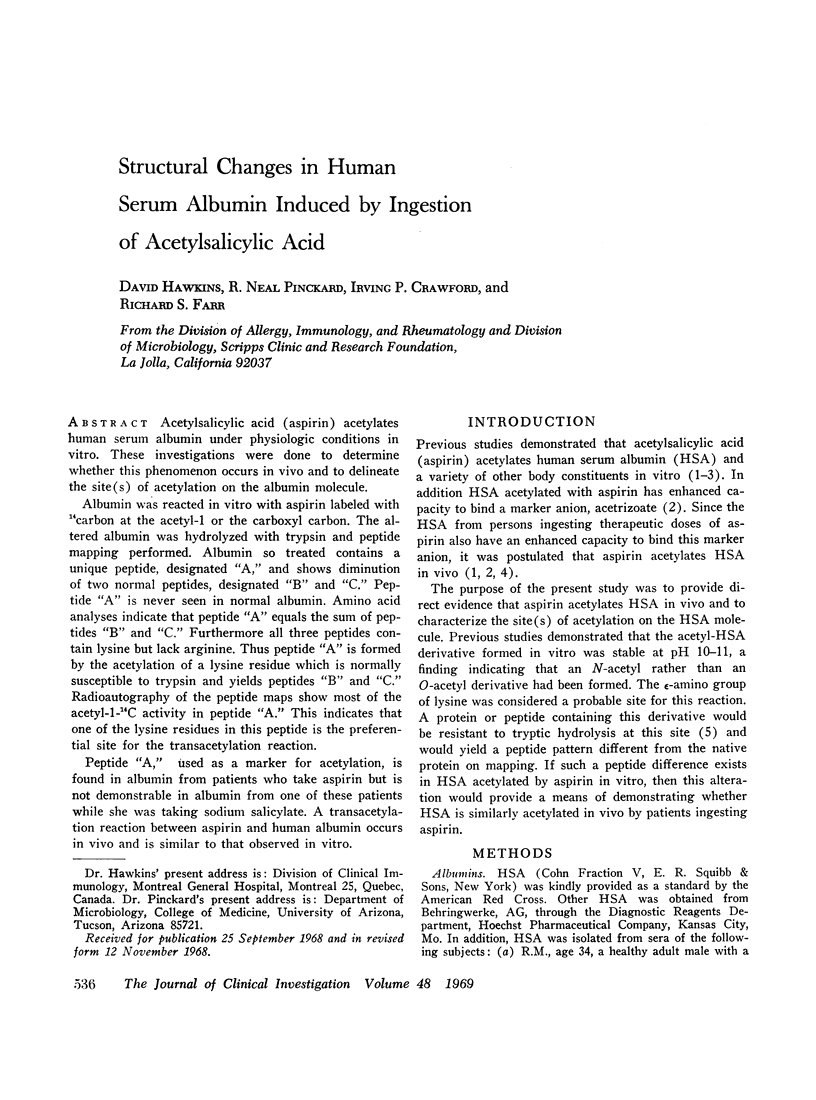
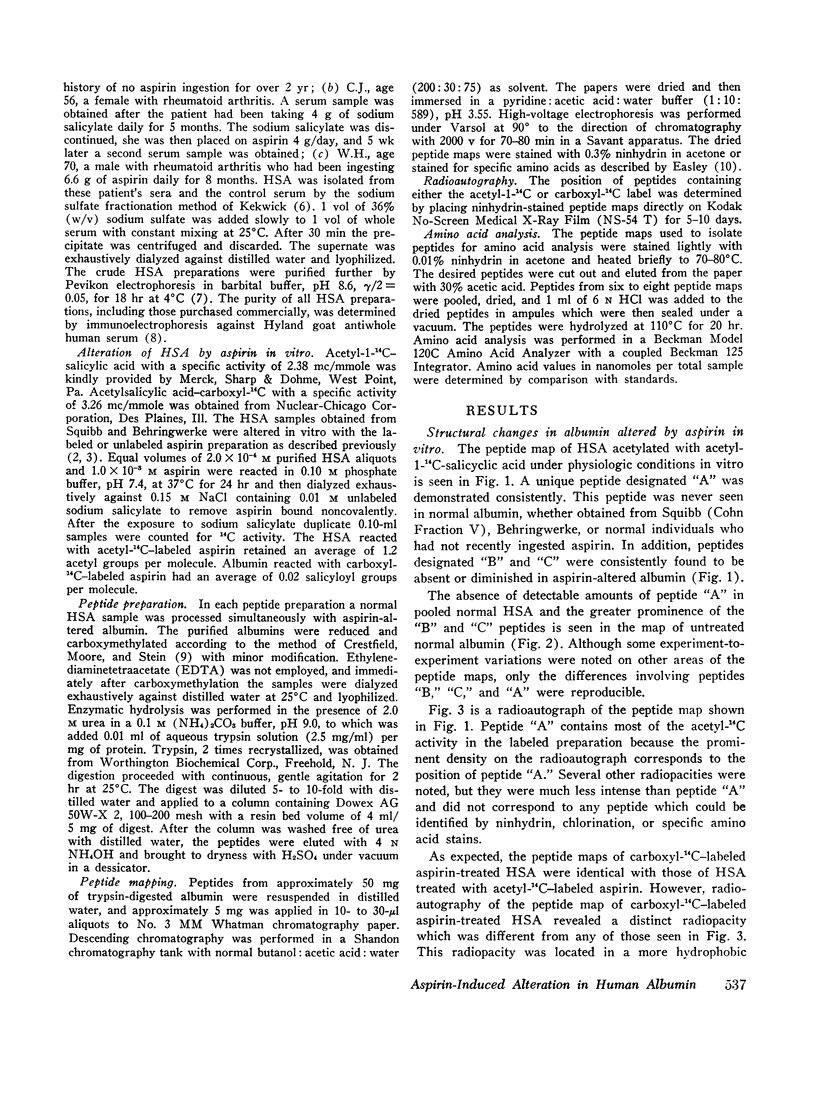

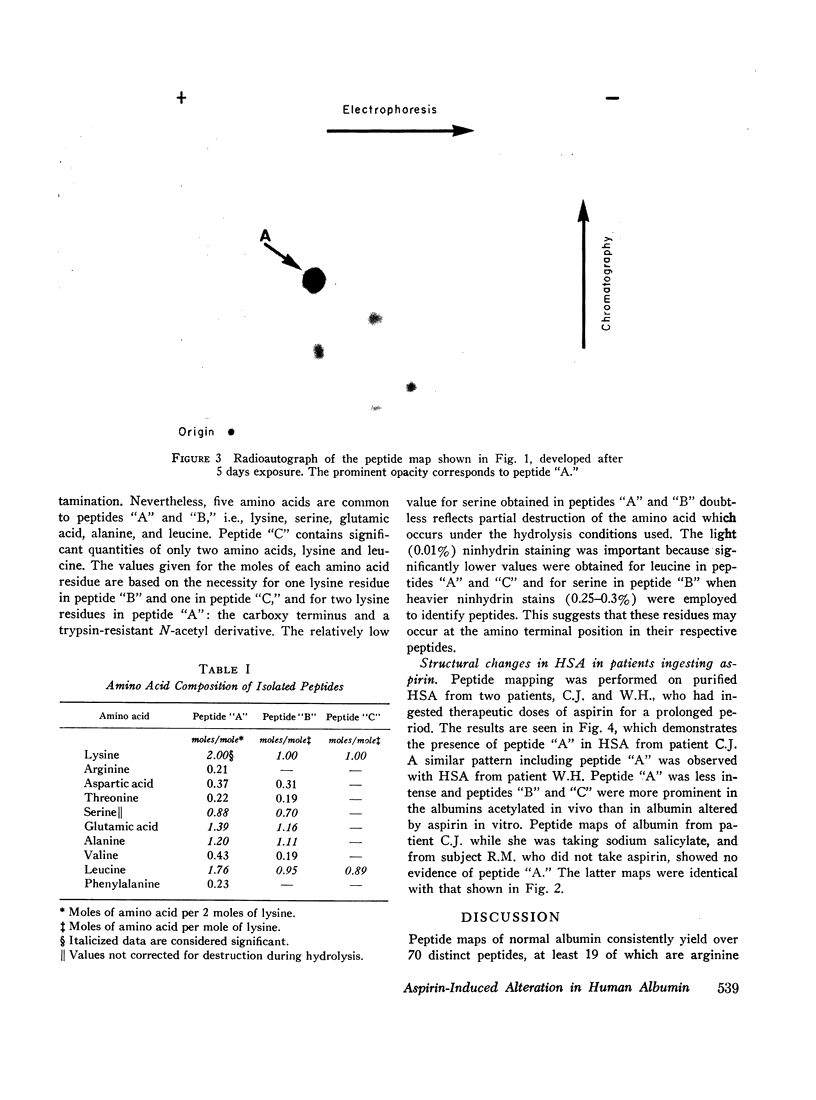
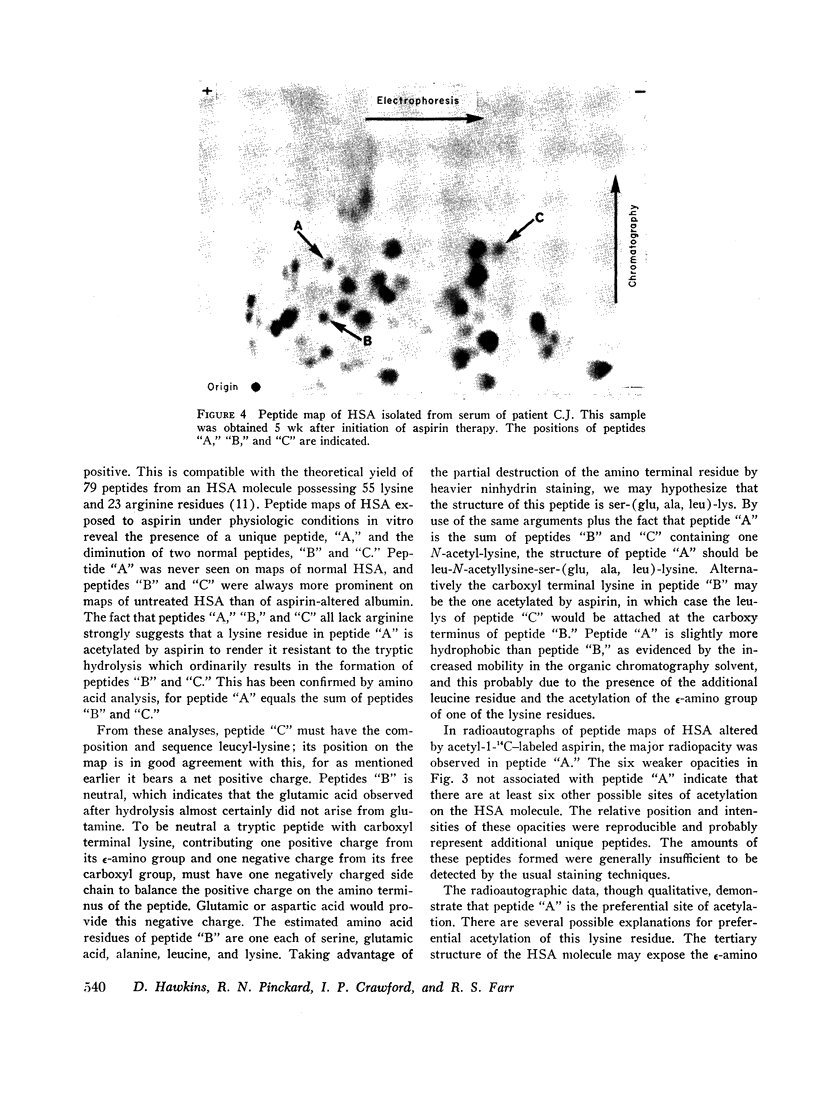
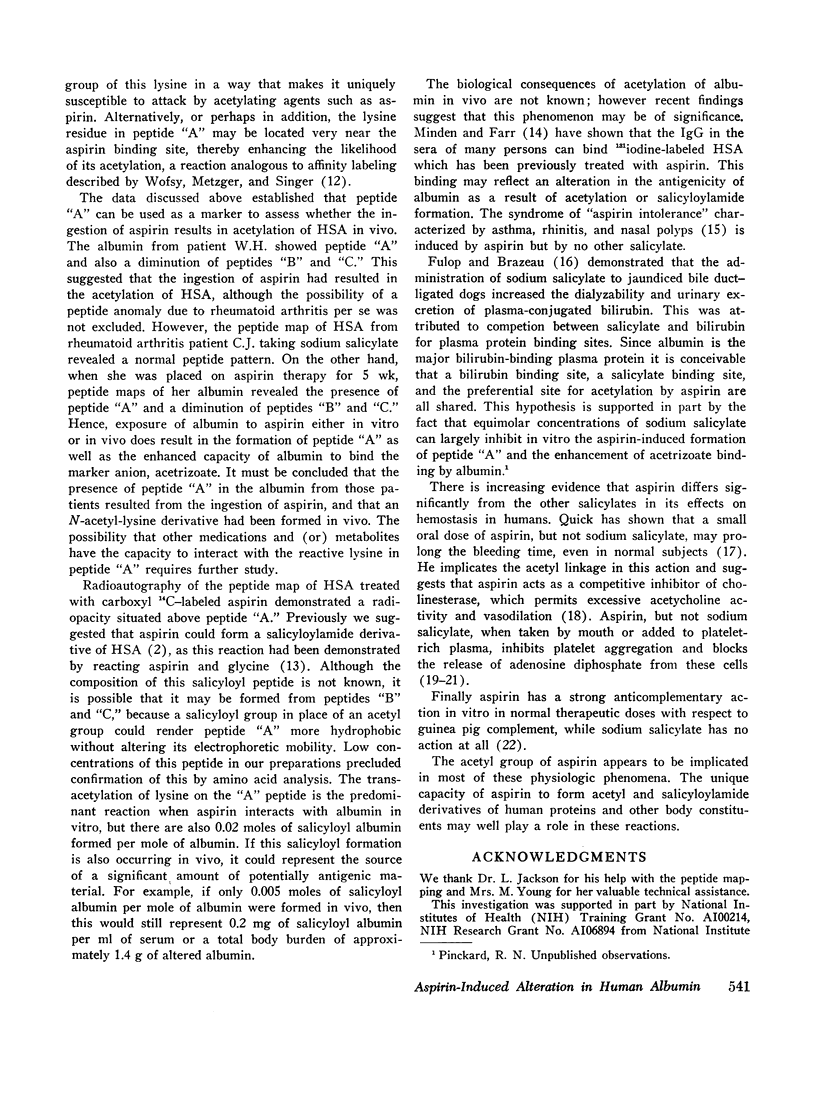
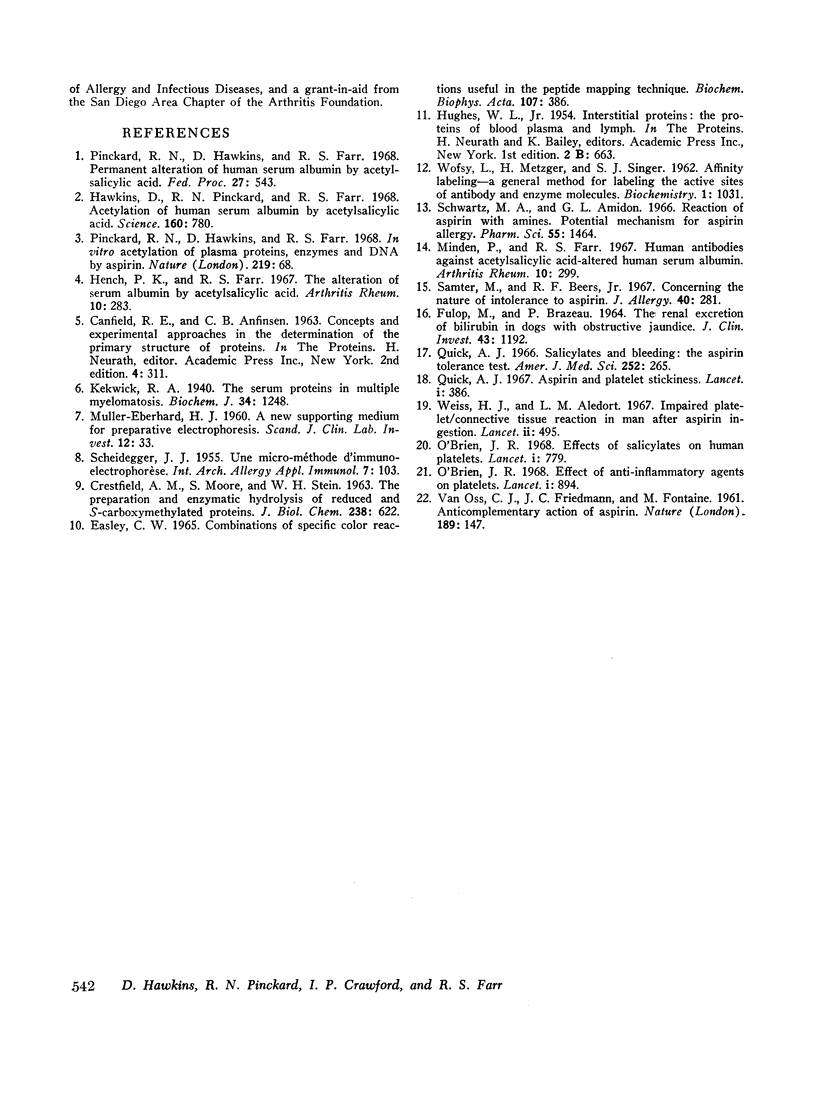
Images in this article
Selected References
These references are in PubMed. This may not be the complete list of references from this article.
- CRESTFIELD A. M., MOORE S., STEIN W. H. The preparation and enzymatic hydrolysis of reduced and S-carboxymethylated proteins. J Biol Chem. 1963 Feb;238:622–627. [PubMed] [Google Scholar]
- Easley C. W. Combinations of specific color reactions useful in the peptide mapping technique. Biochim Biophys Acta. 1965 Sep 13;107(2):386–388. doi: 10.1016/0304-4165(65)90147-9. [DOI] [PubMed] [Google Scholar]
- FULOP M., BRAZEAU P. THE RENAL EXCRETION OF BILIRUBIN IN DOGS WITH OBSTRUCTIVE JAUNDICE. J Clin Invest. 1964 Jun;43:1192–1202. doi: 10.1172/JCI105003. [DOI] [PMC free article] [PubMed] [Google Scholar]
- Hawkins D., Pinckard R. N., Farr R. S. Acetylation of human serum albumin by acetylsalicylic acid. Science. 1968 May 17;160(3829):780–781. doi: 10.1126/science.160.3829.780. [DOI] [PubMed] [Google Scholar]
- Kekwick R. A. The serum proteins in multiple myelomatosis. Biochem J. 1940 Sep;34(8-9):1248–1257. doi: 10.1042/bj0341248. [DOI] [PMC free article] [PubMed] [Google Scholar]
- MULLER-EBERHARD H. J. A new supporting medium for preparative electrophoresis. Scand J Clin Lab Invest. 1960;12:33–37. [PubMed] [Google Scholar]
- O'Brien J. R. Effect of anti-inflammatory agents on platelets. Lancet. 1968 Apr 27;1(7548):894–895. doi: 10.1016/s0140-6736(68)90242-0. [DOI] [PubMed] [Google Scholar]
- O'Brien J. R. Effects of salicylates on human platelets. Lancet. 1968 Apr 13;1(7546):779–783. doi: 10.1016/s0140-6736(68)92228-9. [DOI] [PubMed] [Google Scholar]
- Quick A. J. Salicylates and bleeding: the aspirin tolerance test. Am J Med Sci. 1966 Sep;252(3):265–269. doi: 10.1097/00000441-196609000-00003. [DOI] [PubMed] [Google Scholar]
- SCHEIDEGGER J. J. Une micro-méthode de l'immuno-electrophorèse. Int Arch Allergy Appl Immunol. 1955;7(2):103–110. [PubMed] [Google Scholar]
- Samter M., Beers R. F., Jr Concerning the nature of intolerance to aspirin. J Allergy. 1967 Nov;40(5):281–293. doi: 10.1016/0021-8707(67)90076-7. [DOI] [PubMed] [Google Scholar]
- WOFSY L., METZGER H., SINGER S. J. Affinity labeling-a general method for labeling the active sites of antibody and enzyme molecules. Biochemistry. 1962 Nov;1:1031–1039. doi: 10.1021/bi00912a013. [DOI] [PubMed] [Google Scholar]
- Weiss H. J., Aledort L. M. Impaired platelet-connective-tissue reaction in man after aspirin ingestion. Lancet. 1967 Sep 2;2(7514):495–497. doi: 10.1016/s0140-6736(67)91658-3. [DOI] [PubMed] [Google Scholar]
- van OSS C., FRIEDMANN J. C., FONTAINE M. Anticomplementary action of aspirin. Nature. 1961 Jan 14;189:147–147. doi: 10.1038/189147a0. [DOI] [PubMed] [Google Scholar]






